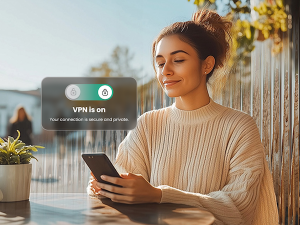It’s the most wonderful time of the year, but I’m feeling anxious — security anxious, that is. Every year, we see a new round of electronic gadgets to gift during the holidays—and even indulge in ourselves. But more often than not, especially today, those tech-driven gifts requires an internet connection to work. And any internet connection has the potential to be vulnerable to cybercriminals without the proper security precautions.
That’s why we’re releasing our second-annual McAfee Most Hackable Holiday Gifts list: to remind you that smart gadgets are at risk of cybersecurity shenanigans, and most importantly, how to protect them.
Most users know older technology like laptops, phones and desktops have vulnerabilities cybercriminals could exploit. But what they don’t know is that many devices that aren’t explicitly computers are also connected to the internet. That means they are just as vulnerable.
Web cameras, connected toys, fitness trackers and more need to be secured. If they’re not, holiday shoppers could find themselves unwitting participants in large-scale attacks, like previous widespread attacks on children’s toys and other family-loved technology. According to our survey, most people (81 percent) think it’s important that their online identity and internet-connected devices are secure this holiday season, but nearly half (47 percent) are unsure if they are taking the right security measures.
Here’s the breakdown of the most hackable holiday gifts this year:
Laptops and PCs
Big-ticket gifts like laptops and PCs are always popular items. They’re also always at the top of the list for cybercriminals to crack. Securing these devices isn’t difficult, though. Just make sure you activate security applications as part of the initial startup of your brand new device, and ensure you keep the software up to date.
Smartphones and Tablets
According to our survey, 52 percent of users plan to purchase either a smartphone or tablet this holiday shopping season. Much like their laptop and desktop brethren, these devices are vulnerable to malware and need to be protected, as well. Here, good passwords and good security practices, such as installing a security application like McAfee Mobile Security, avoiding suspicious third-party applications, and using a PIN to lock your device can help.
Media Players and Streaming Sticks
Media players and streaming sticks are a new, growing product category. They hook into just about any television and provide an easy and convenient way to watch shows, movies and more. But the security of these devices do need to be maintained. They need to be updated regularly and, if the option is available, protected by complex passwords. Fortunately, many device manufactures push automatic updates directly to these devices, but you can do a manual check depending on device and its manufacturer.
Smart Home Automation Devices and Applications
The Internet of Things (IoT), a family of devices that connect to the internet and in turn connect to each other, is a wonderful category to go to when finding a gift for a friend or family member this year. However, they are often times the most vulnerable of the holiday gift-giving bunch. Some devices have weak security standards. Others lack any security standards at all.
If you’re considering a gift under the “IoT” umbrella, then do your research. Make sure you’re aware of the security standards your device has. Read online reviews for the connected gadgets you are considering, and that you’re aware of any security shortcomings you may encounter. After all, cybercriminals have found many ways to trick smartlocks, thermostats and more to use these devices in distributed denial of service attacks like the attack that took down many popular websites.
Drones
Finally, perhaps the hottest-ticket item of the year: drones. In fact, drone sales are expected to grow to more than $20 billion by 2020. They offer the ability to capture amazing videos, intriguing sights and are useful tools to get eyes where it’s hard to see. However, they still need to be secured. Again, using a complex password at least eight characters long with random numbers, letters and symbols is necessary for safe operation.
Regardless of what you purchase (or receive) there are a few tips and tricks to keep in mind to make sure everyone has a safe season:
- Change default passwords, and do an update right away. If you receive a connected gift, change the default password first and foremost. Default manufacturer passwords are rather easy for criminals to crack. Also, your device’s software will need to be updated at some point. In a lot of cases, devices will have updates waiting from them as soon as they’re taken out of the box. The first time you power up your device, you should check to see if there are any updates or patches from the manufacturer in order to ensure you’re protected from the latest threats.
- Secure your Wi-Fi. Any smart device will need a Wi-Fi connection to work. In order to protect what’s yours, make sure you take the time to set your Wi-Fi up with a complex password. And remember: avoid public Wi-Fi if you can—it’s often insecure, and vulnerable to penetration by bad actors.
- Use strong passwords, and strong PINs. Strong passwords are critical to any internet-connected device today. Make them count. Take the time to set up a robust password that’s at least eight characters long and includes uppercase letters, lowercase letters, numbers and symbols. They also need to be unique to each device and each service. Password managers are useful tools that can help generate, and keep track of, complex passwords across all your digital accounts.
And, of course, stay on top of the latest consumer and mobile security threats by following me and @McAfee_Home on Twitter, and ‘Like’ us on Facebook.












